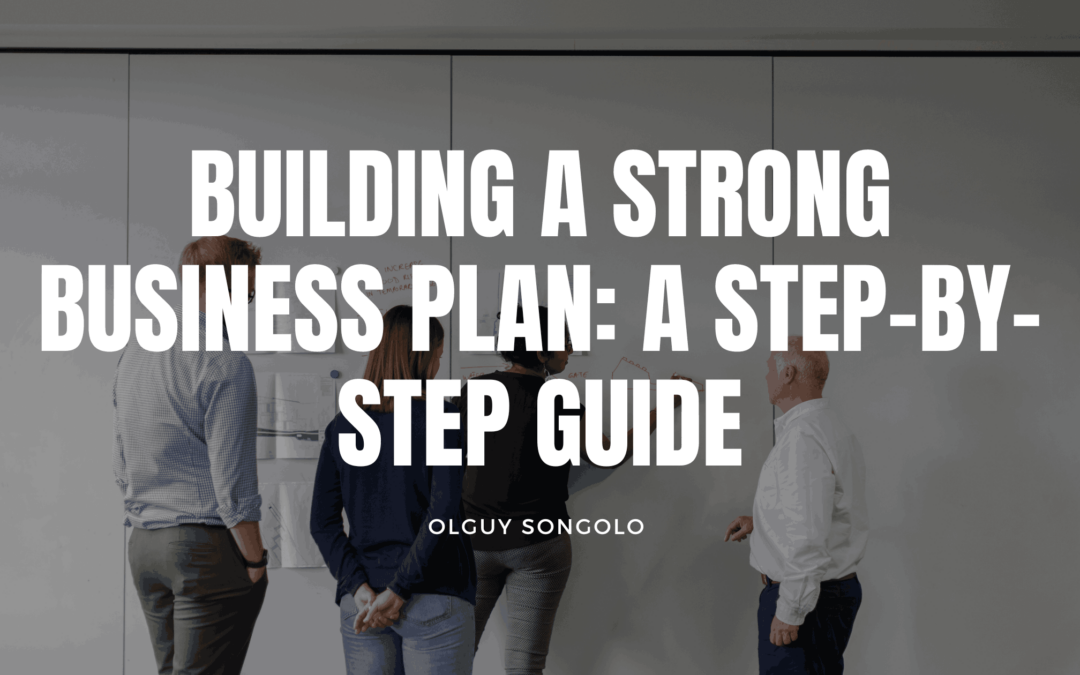A well-crafted business plan is a roadmap to success. It outlines your vision, goals, and strategies while serving as a tool to attract investors and guide decision-making. Whether you’re launching a startup or expanding an existing business, a strong business plan is essential. This step-by-step guide will help you create a comprehensive and compelling plan.
Step 1: Executive Summary
The executive summary is the first section of your business plan but is typically written last. It provides a high-level overview of your business, highlighting key points from other sections. This is your chance to make a strong first impression. Include a brief description of your business, the problem it solves, your target market, and your unique value proposition. For example:
- “Our business, EcoFresh, provides sustainable cleaning products that are safe for both people and the environment. We target eco-conscious consumers who value health and sustainability.”
Step 2: Business Description
In this section, dive deeper into your business idea. Explain the industry you’re entering, its current state, and where your business fits within it. Include details about your business structure (e.g., sole proprietorship, partnership, or corporation) and location. Highlight what sets you apart from competitors, such as innovative products, exceptional service, or unique branding.
Step 3: Market Analysis
Understanding your market is crucial. Conduct thorough research to identify your target audience, including their demographics, preferences, and purchasing behavior. Analyze competitors to determine their strengths and weaknesses. Tools like SWOT analysis (Strengths, Weaknesses, Opportunities, Threats) can provide valuable insights. Use data and statistics to back up your findings. For example:
- “The eco-friendly cleaning market is expected to grow at 10% annually, with 70% of consumers willing to pay a premium for sustainable products.”
Step 4: Organization and Management
Investors want to know who is leading the business. This section should outline your organizational structure and highlight key team members’ expertise. Include a detailed org chart and brief bios of the founders and leadership team. Mention any advisors or consultants you plan to work with. For example:
- “Our team includes Sarah Green, CEO, with 10 years of experience in sustainable product development, and John Brown, CFO, who has managed finances for Fortune 500 companies.”
Step 5: Product or Service Line
Clearly describe your products or services. Focus on what makes them unique and why they will appeal to your target audience. If applicable, include details about your production process, intellectual property (e.g., patents or trademarks), and future product development plans. For instance:
- “Our flagship product, EcoClean All-Purpose Spray, is made from biodegradable ingredients and packaged in reusable bottles.”
Step 6: Marketing and Sales Strategy
This section outlines how you plan to attract and retain customers. Start by defining your brand positioning and messaging. Detail your marketing channels, such as social media, email campaigns, and partnerships. Include your sales strategy\u2014whether you’ll sell directly to consumers, through retailers, or online. Mention any promotional offers or loyalty programs. For example:
- “Our marketing strategy focuses on Instagram and TikTok, targeting millennials and Gen Z consumers who prioritize sustainability.”
Step 7: Financial Projections
Financial projections demonstrate the viability of your business. Include key financial statements, such as income statements, cash flow statements, and balance sheets. Provide forecasts for at least three years, highlighting revenue, expenses, and profit margins. If you’re seeking funding, specify how much you need and how it will be used. For example:
- “We project $500,000 in revenue in the first year, with a profit margin of 20%. Funding of $100,000 will be allocated to production and marketing.”
Step 8: Funding Request (if applicable)
If you’re seeking external funding, dedicate a section to your funding request. Be specific about the amount you need, how it will be used, and the terms you’re offering (e.g., equity or loan repayment). Explain how the investment will help achieve your business goals.
Step 9: Appendices and Supporting Documents
Use the appendices to include additional information that supports your business plan. This could be market research data, product images, legal documents, or resumes of key team members. Make sure the content is organized and easy to reference.
Tips for Creating an Effective Business Plan
- Be Clear and Concise: Avoid jargon and focus on clarity. Your plan should be easy for investors and stakeholders to understand.
- Use Visuals: Charts, graphs, and infographics can make complex information more digestible.
- Focus on Your Audience: Tailor your business plan to your audience\u2014whether it’s potential investors, lenders, or internal stakeholders.
- Update Regularly: A business plan is a living document. Revisit and revise it as your business evolves.
A strong business plan is more than a document; it’s a tool that guides your business journey and convinces others of your vision. By following this step-by-step guide, you’ll create a comprehensive plan that sets you up for success. Remember, the effort you put into crafting your business plan reflects your commitment to your entrepreneurial goals. Start writing, and take the first step toward turning your vision into reality.

